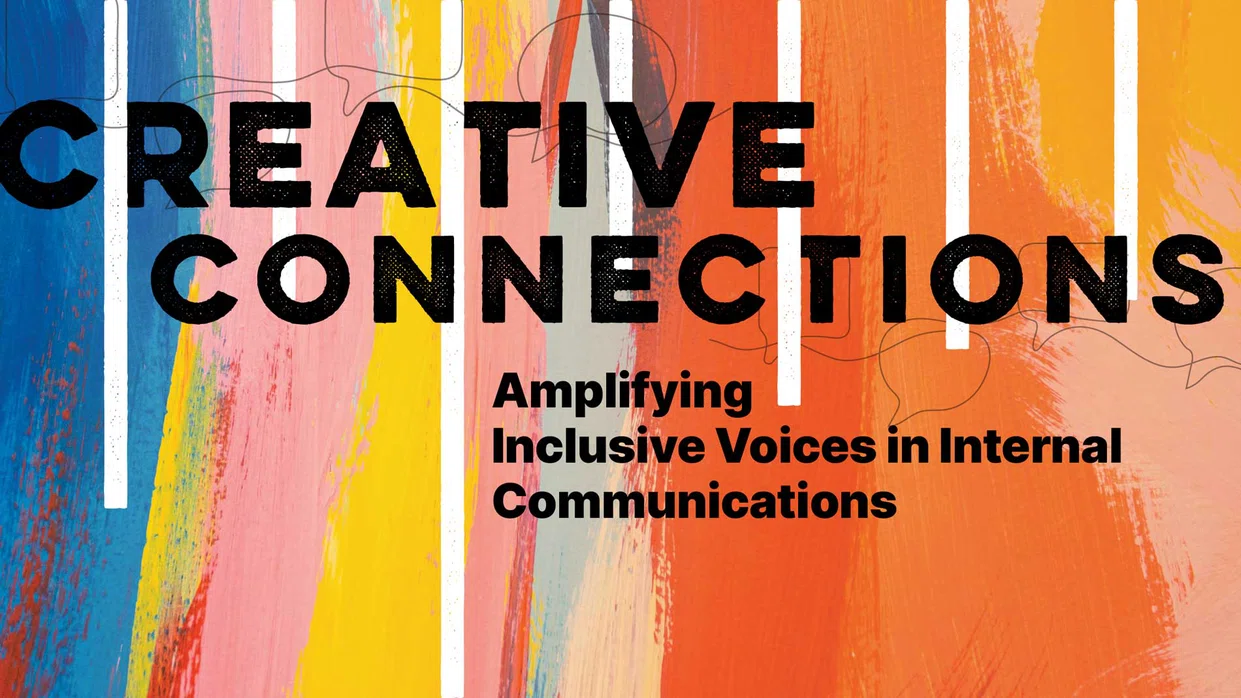



About

IN EVERY ISSUE
1.
PRESIDENT'S MESSAGE
Why Cultivating Value Matters

2.
Publisher's Message
Creativity, Authenticity, and the Power of Standing Out

3.
FROM THE EDITOR
Welcome to the January/February 2025 Issue of the Marketer

Calendar of Events
4.

To say there’s a lot going on with workplace communications right now is a bit of an understatement. On any given day, people get an average of 120 email messages.1 With all those words flying back and forth, you’d think communication would be great, right?
Unfortunately, the data shows otherwise.
Gallup data shows that only 13% of employees strongly agree that leadership of their organization communicates effectively with the rest of the organization.2 What’s more, 50% of leaders say the top challenge they face in sharing essential communications – the updates that keep their organization aligned – is understanding what’s important to employees and interested parties.3 The hardest part? Writing in a concise, engaging way that people will actually read.
Lack of effective communications from the leadership and employee perspective indicates inefficiencies as well as an environment that is not conducive to creating inclusive internal communications.
As A/E/C marketing and business development professionals, crafting creative internal communications relies on three essential elements: safety, engagement, and, most importantly, inclusivity. Employees today are actively seeking a sense of belonging, and organizations increasingly recognize the importance of fostering it to meet this demand. When employees feel a strong sense of belonging at work, job performance improves by 50%, turnover risk decreases by 50%, and sick days are reduced by 75%.2 We know that when employees have inclusive leaders, they are more productive, have higher engagement, are more likely to share information and decision-making, and have lower turnover, leading to improved team dynamics and project success.3 Which makes it truly tragic when an inclusive leader can’t create that sense of safety and engagement because of issues with their internal communications.
The good news is that there are some very simple things leaders can do to instantly uplevel their internal communications and foster the creativity that comes with well-communicated inclusivity.
Creativity-Fostering Best Practices for Communications:
Be Engaging
Nobody wants to read something that’s boring. Create human-centered, story-driven content, and write simply.
Align Vision and Values
Your firm’s vision and values should be driving everything you do in your organization, and your internal communications are no exception. Think about ways that you can incorporate both in your day-to-day team communications – it’s often easier than you think! For example, one of our values at PointNorth is “Keep It Real: Authenticity is the catalyst for building change.” That means that our communications are honest and authentic, and we don’t shy away from tough conversations because we know that’s how we grow.
Keep It Real: Authenticity is the catalyst for building
change.”
A PointNorth Value
Solicit Feedback and Actually Listen
Creativity is inherently co-creative, so it’s important that you make back-and-forth, two-way internal communication the norm in all areas of your organization. Ask everyone in your organization for feedback and actually listen to what they have to say. You might be surprised at some of the gaps they point out and some easy wins you can implement.
Build trust with Consistent Action
Trust is the foundation of a creativity culture, and if it’s shaky in one area of your organization, it’ll be shaky in the others, too. Build trust by showing up the same way in all your internal communications and by having clear “rules” and expectations for how and when you expect people to communicate. When the boundaries are clear, creativity can flow.
Keep it Simple
Thankfully, there are no report cards for internal communications. You don’t have to impress an English teacher or sound like anybody but yourself. Keep your writing and speaking simple and authentic.
Humanize the Work
Another of our values at PointNorth is “People First: Everyone is welcome – we rise by lifting others.” It applies to our internal communications and can benefit yours, too. The more you can remember that you’re speaking to humans, and the more you can make caring for the people around you a norm in your internal communications, the better the company will be, and the more mental bandwidth people will have for coming up with truly creative ideas.
People First: Everyone is
welcome – we rise by lifting others.”
A PointNorth Value
For instance, on one of our projects with an agency that would typically be more straightlaced, we were able to work with them to create some truly humanizing social media about infrastructure, of all things – and it had a huge impact on how the project was received (and won a few awards!).
Final Tip: Use an Equity Lens.
An equity lens is a process to analyze the impact of the design and implementation of policies, practices, and decision-making authority on historically excluded and underrepresented individuals and groups. It can be really helpful in overcoming unconscious biases so you can create the kind of culture in your internal communications that makes creativity not only possible but inevitable. Communications that are inclusive and create belonging.
Internal communications might not be the first thing you think of when it comes to increasing creativity and building inclusivity – but there’s nothing more present in every single element of our working days. Get this right, and it impacts your whole organization.
Sources:
Lisa Keohokalole Schauer is the President of PointNorth Consulting, a minority, woman-owned firm based in Washington state. She holds a Master of Arts in Leadership and Learning from George Washington University, a Bachelor of Arts in Public Relations, and a Bachelor of Arts in Political Science from Gonzaga University. Lisa believes in-reach (employee engagement) fuels outreach (external impact), all rooted in communication. She catalyzes change by strengthening in-reach to maximize external impact. Lisa is a twenty-year veteran member of SMPS, a CPSM, and on a mission to build a sense of belonging in A/E/C organizations.
Connect on Linkedin










